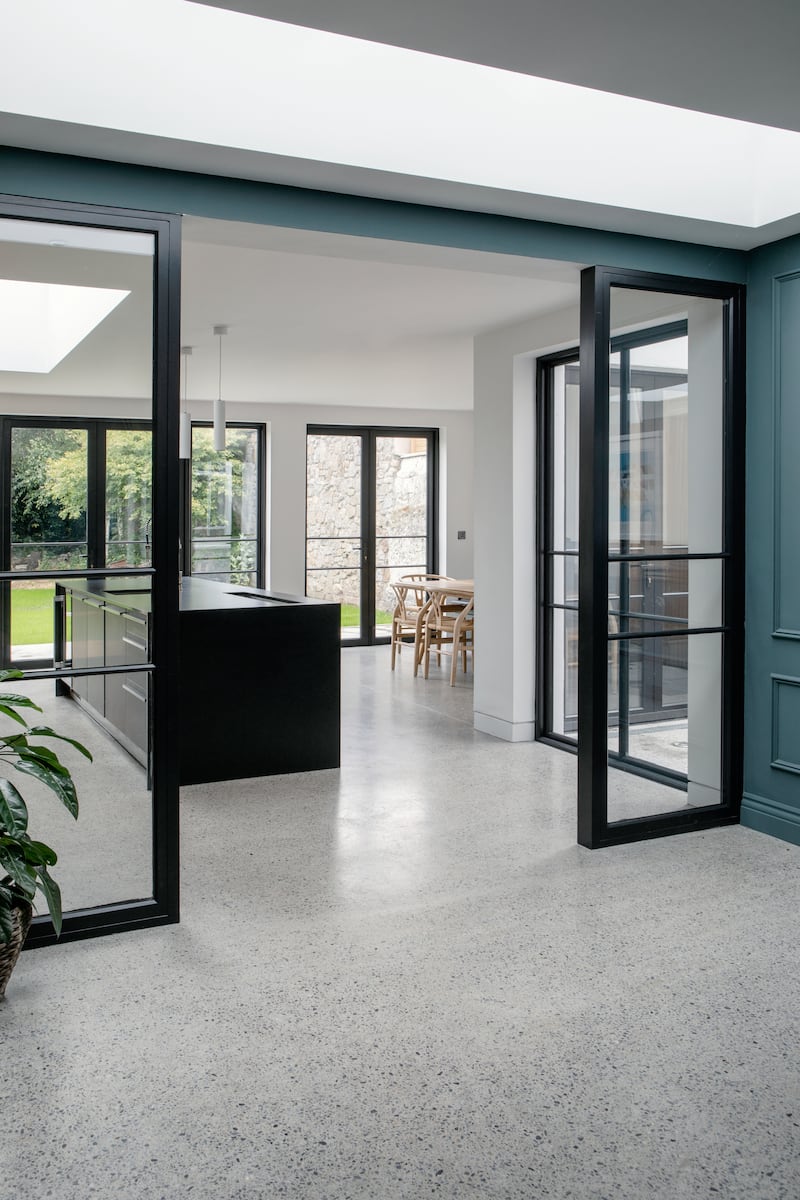The amount of natural light in a space is often overlooked as a design element, but it plays a crucial role in shaping the overall ambience. Natural light affects everything from colour choices to furniture selection. In regions such as Ireland, where sunlight can be limited, maximising natural light can be challenging. But with careful techniques and considerations you can create a well-lit home that enhances wellbeing.
Windows
When it comes to brightening your home with natural light, the style of windows you choose plays a significant role. Opting for cleaner and more contemporary designs will generally allow more light to enter your rooms compared with ornate or elaborate traditional window styles.
The type of glazing you choose will also affect the amount of natural light that fills your living spaces. Triple-glazed windows, while great for keeping your home cosy and reducing glare, can reduce the amount of daylight that filters inside. This happens because the light has to pass through three layers of glass, dimming the overall brightness.

Window dressings such as curtains and blinds can also contribute to blocking natural light. Pull back curtains clear from the windows to maximise daylight. Remove items on windowsills that might obstruct light, such as plants or bulky ornaments. Avoid pelmets or decorative blinds that can block a significant amount of daylight and make a room feel dark.
READ MORE
The direction your windows face can also affect how much natural light is let into your home. South-facing windows tend to receive the most natural light, followed by west-facing, east-facing and north-facing windows. Consider this when choosing the size and style of your windows and making decisions about window treatments.
Glazing
Consider replacing solid doors with glazed versions, especially in rooms that connect to one another. Sliding glass doors are an excellent choice as they maintain an open, airy atmosphere while allowing light to pass through, even when closed. However, be sure to adhere to fire-rated glass requirements in apartments and consult the management company before making any alterations.

Another clever technique to invite more daylight into your space is by raising the height of your glazed doors internally and externally. In Ireland, standard internal doors typically have a height of 2.1m. Increasing them to 2.4m or even higher (if your ceiling permits) can significantly amplify the amount of sunlight that fills the room. This is because most of the light enters through the top of the screen or door, so increasing the height noticeably enhances the overall brightness.
Skylights
When planning your room, consider installing daylight sources from different orientations. This will allow you to take advantage of the light at different times of the day, resulting in a more balanced spread of light in the room.
One of the best ways to do this is to Install a skylight or roof light. Roof lights, such as the Velux-style windows, are popular choices for pitched rooms and attic conversions. For flat roofs, consider flat or flush rooflights for a minimalist look or roof lanterns for a more traditional touch. Control options, such as remote operation and sun shading, add convenience and comfort.
Strategically placed roof lights can bring natural light to darker areas, especially in extensions. Consider locating them close to existing external walls to illuminate the middle of the plan. Designated areas such as the kitchen workspace or walkway can benefit from roof lights, creating both a striking feature and a bright space.
Surfaces
When it comes to the light that enters your home, there are different types to consider. Direct, indirect and reflected light. Of the three, reflected light is one you have scope to capitalise on through your choice of surfaces both inside and outside your home.
To maximise reflected light, opt for light and reflective materials or colours. Choosing lighter and brighter floor surfaces such as pale timbers or floor tiles can make a significant difference. In the kitchen, go for bright countertops that enhance the overall brightness.
The colours you choose for your home also greatly impact how light is perceived. Steer clear of shades with hints of pink or peach, as they can make rooms feel darker. Instead, go for colours with green or earthy tones. These hues create a warmer and more inviting atmosphere, enhancing the overall brightness of your rooms.
Mirrors are an incredibly effective way to instantly brighten any room. Strategically placed mirrors can double the feeling of space and light. Consider using mirrors in narrow hallways to create an illusion of openness or as a backsplash in a small or dark kitchen to amplify the natural light in the room.















